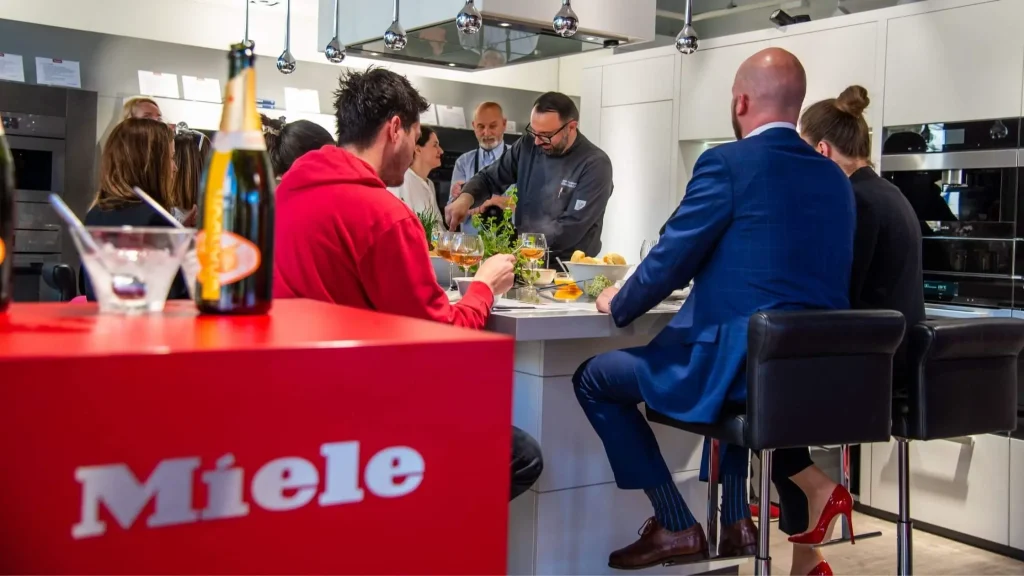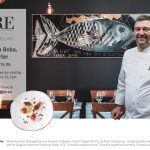Chef Damir Tomljanović
“You know, the best way to become a better chef and learn, is to experience street food culture. Where do you think I should go for the best street food in Asia? I would like to go see and experience” asked Damir Tomljanović, during one of our short conversations over Brunch.
As an international chef, food lover, and more recently, acclaimed judge on Masterchef Croatia, I was starting to understand what made chef Damir tick. He’s someone who’s always curious, motivated, engaging, and never ceases to want to learn more. Characteristics that, together with hard work, have propelled him to greater heights in his already highly impressive career.
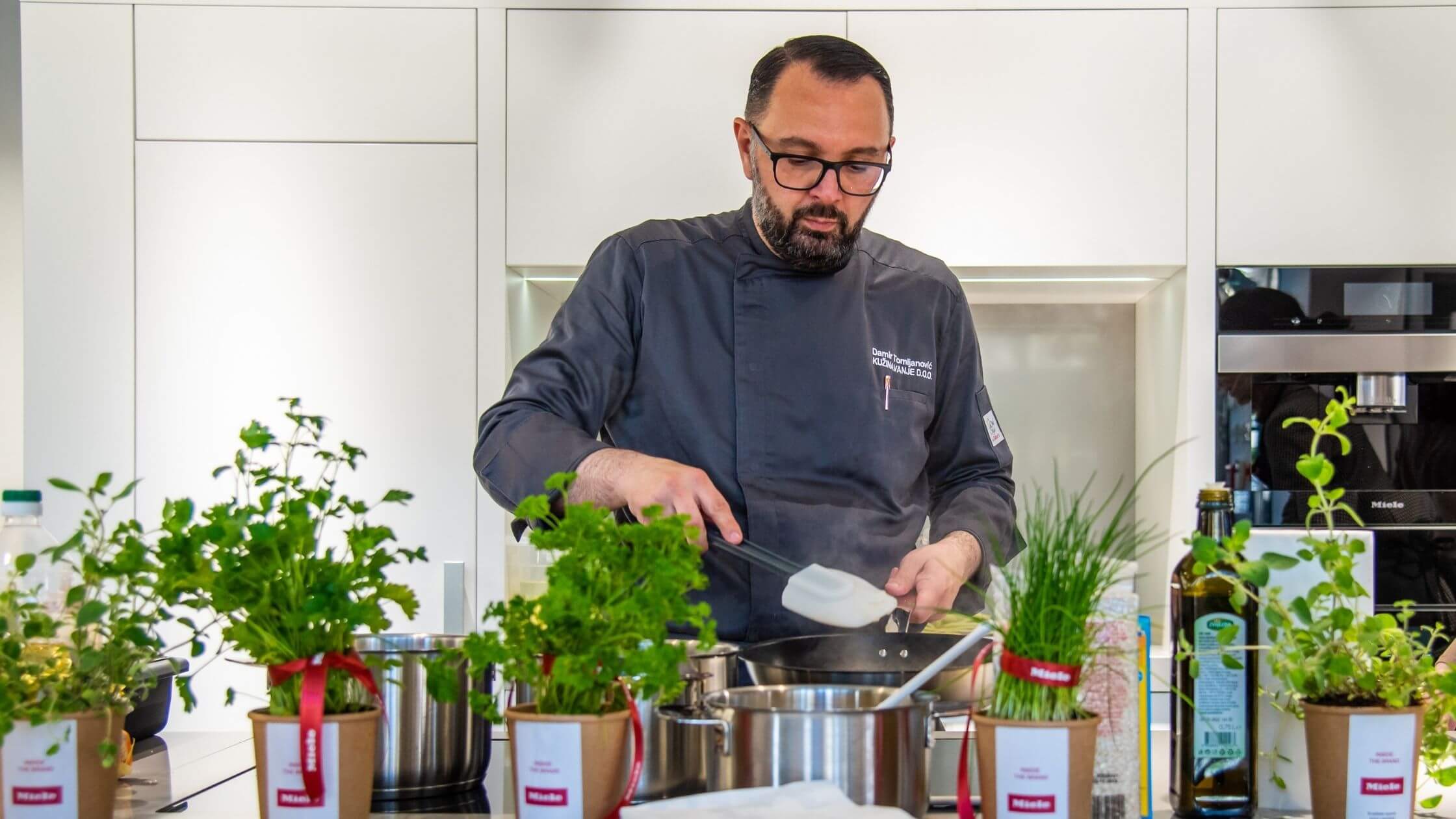
The man himself, Damir Tomljanović. Image: Ivan Gracin/Official photographer.
Hailing from Novi Vinodolski, Damir’s career in the food industry spans over 3 decades. His foray into gastronomy in 1990 was of no surprise considering how he grew up in a food-centric family, where his father was a butcher and mother, a talented culinarian. Since then, he has taken on roles as a chef at acclaimed restaurants like Bevanda and Foša, with stints as a caterer, consultant, and culinary instructor, hoping to inspire the next generation of talented chefs.
Despite his wealth of experience, a key theme that chef Damir has stayed true to over time is the importance of the foundations of a dish. This means the emphasis on local, high-quality, seasonal ingredients, transformed into traditional Croatian dishes with a modern twist.
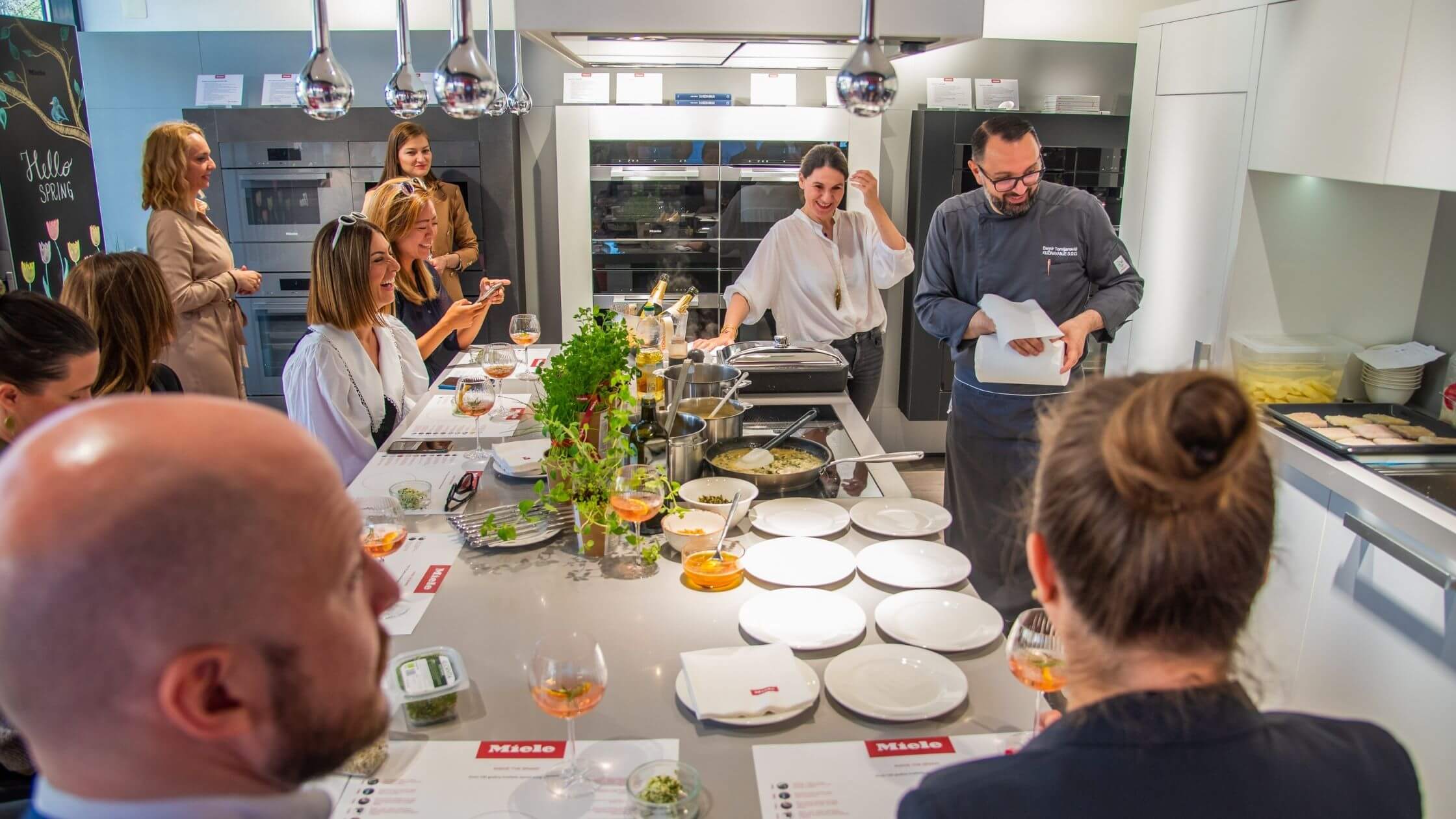
Brunch attendees at Miele Experience Centar, Split. Image: Ivan Gracin/Official photographer.
At his masterclass held in the sleek kitchen of the Miele Experience Centar Split, together with social media influencers, journalists from Slobodna Dalmacija, Dalmacija Danas, and the Miele team in Croatia, I got to witness how to create magnificent dishes in just a fraction of the time with the help of top-of-the-line kitchen technology.
Let the festivities begin!
Brunch opened with the ‘pop’ of a champagne cork by none other than one of the world’s largest producers of fine champagne in France, Moët et Chandon. Their Garden Spritz, a blend of Chandon sparkling wine and house-made bitters made with fresh Valencia oranges, was likened to an Aperol Spritz in a bottle and provided a refreshing start for even better things to come.
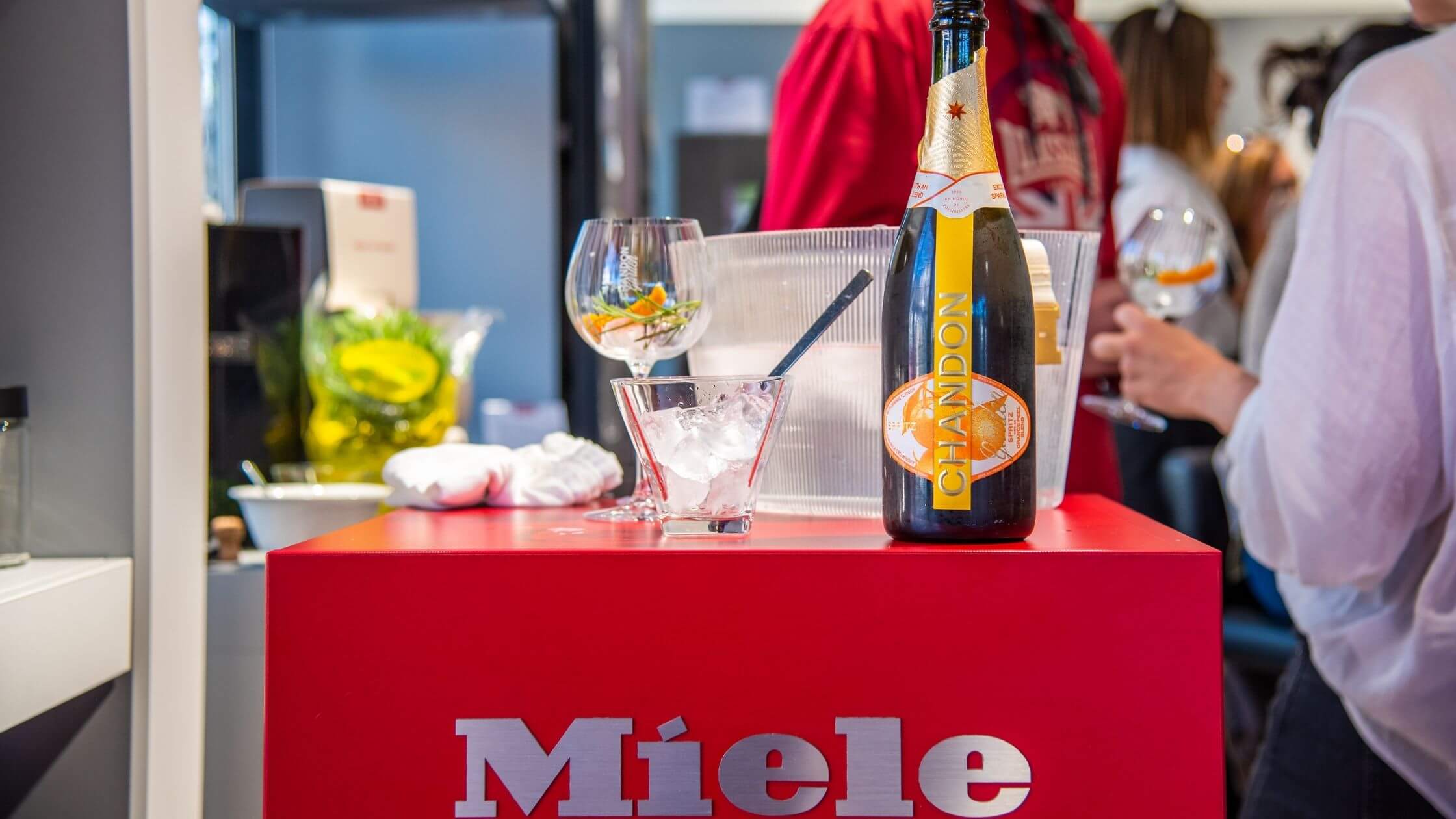 A light, refreshing beverage, perfect for sipping on warm Split Summer nights. Image: Ivan Gracin/Official photographer.
A light, refreshing beverage, perfect for sipping on warm Split Summer nights. Image: Ivan Gracin/Official photographer.
We were one of the lucky few who were able to enjoy a glass (or more!) of Chandon’s Garden Spritz since it had only been launched in Croatia the month before! Served in a delicate vintage glass with a sprig of rosemary and orange peel, the wider bowl allowed the aroma of the oranges and bitters to reveal themselves while retaining a steady stream of bubbles to tickle the palate. If Croatian Summers came in a bottle, Chandon’s Garden Spritz would be the closest they’d get.
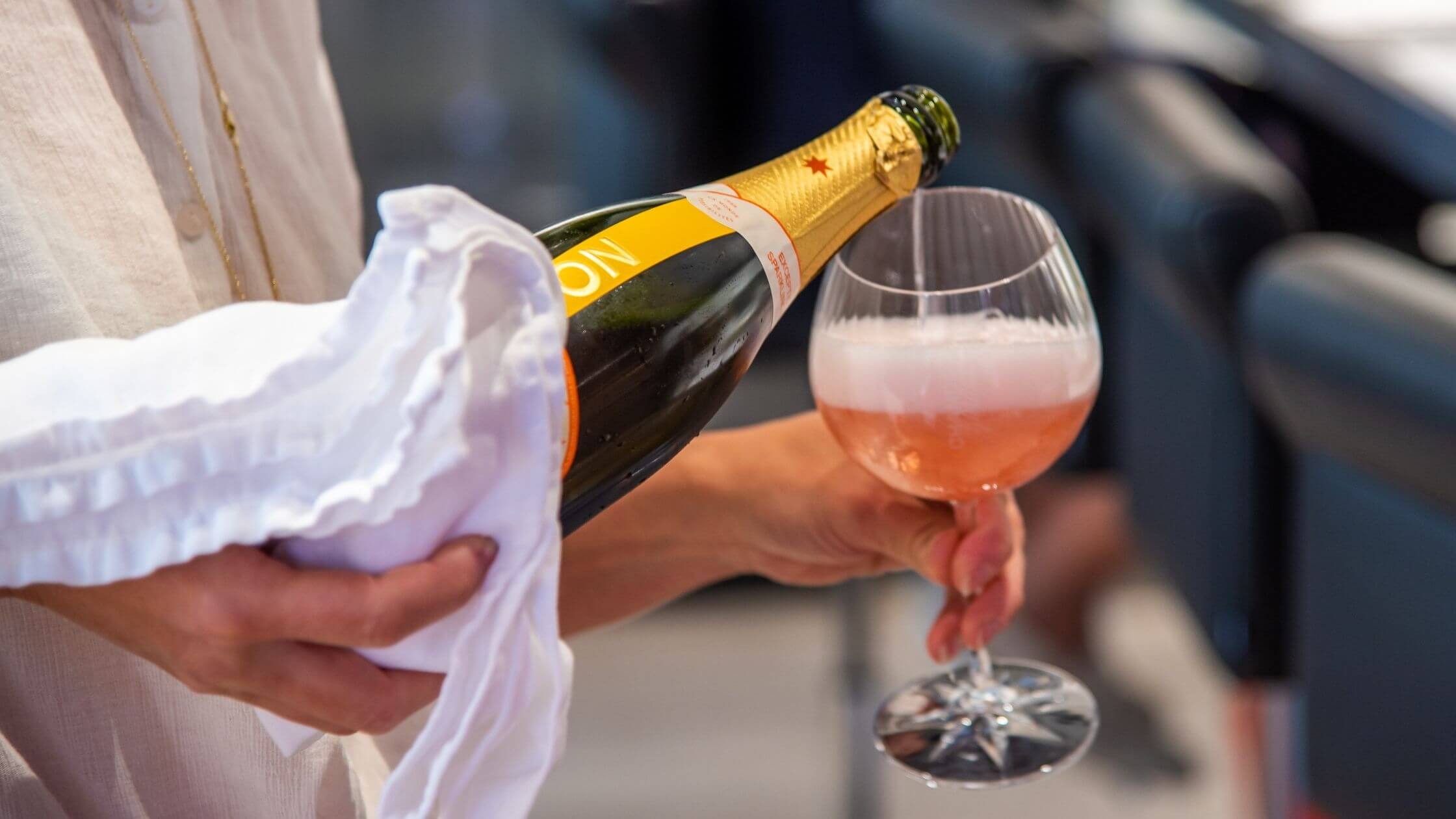
A wonderful accompaniment to any Brunch table. Image: Ivan Gracin/Official photographer.
A reason for celebration
While the first glass went down almost too easily, I couldn’t think of a better way to celebrate the 5th year of Miele’s flagship store opening in Split, as well as the launch of their new Generation 7000 built-in cooking appliances.
The launch of Generation 7000 is considered one of the largest and most innovative for Miele. With over 160 new built-in models across 6 product groups, this ‘smart’ range focuses on making tasty meals with utter ease, without sacrificing your safety in the process. Words that make amateur home cooks like me who are constantly juggling 4 different elements on the stove while trying to burn anything, swoon.
And can I just quickly rave about the aesthetics of this new line? With 4 distinct looks to choose from – PureLine, VitroLine, ArtLine, and ContourLine, it’ll be easy for you to find something that complements and augments the design of any space.
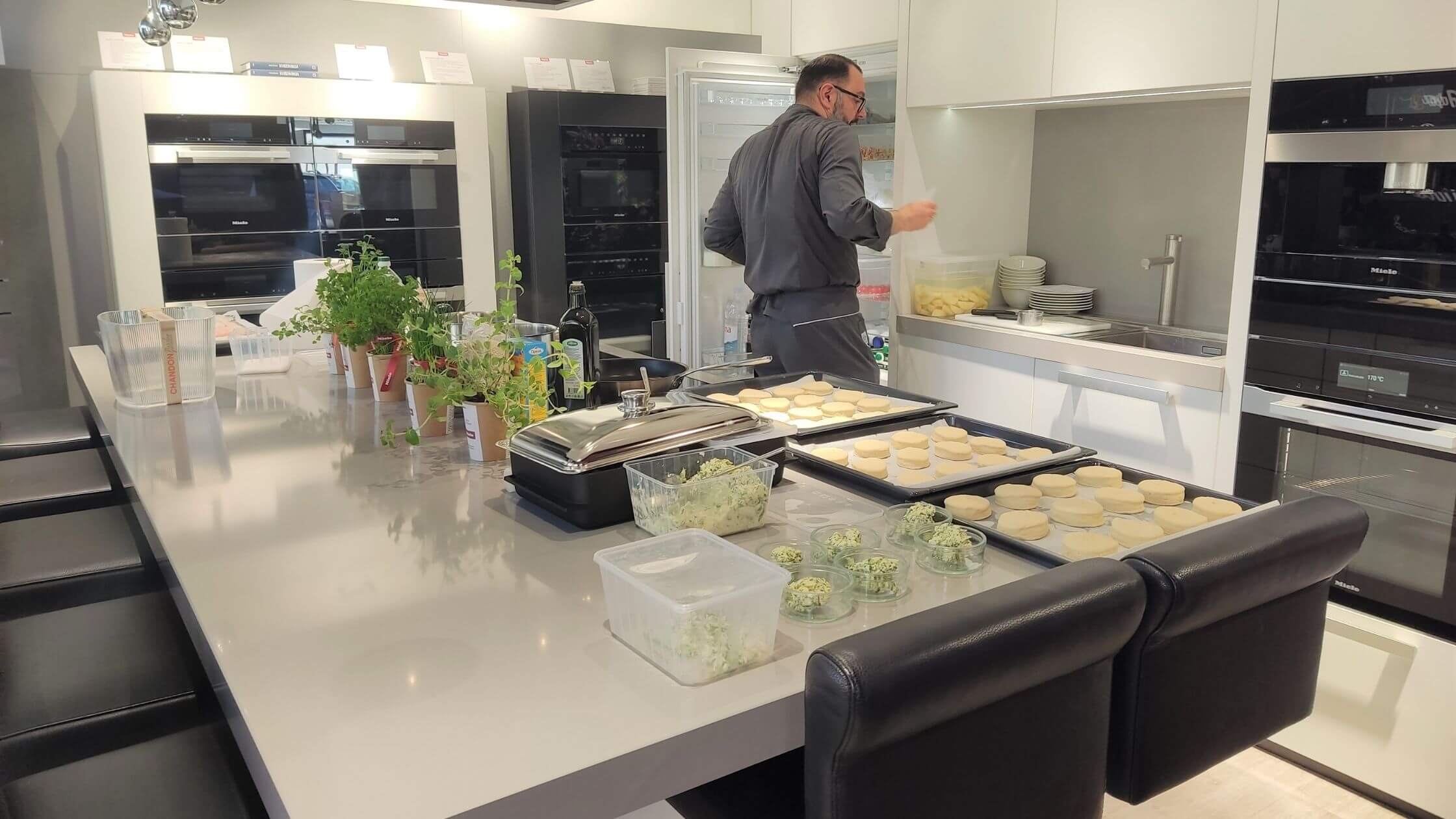
Chef Damir in his element at the Miele Experience Centar test kitchen. Image: Author’s own.
With their continued success, it can be hard to imagine that the world’s largest family-owned premium appliance manufacturer had humble beginnings that span over a century. It all started in Herzebrock, Germany, in 1989, when founders Carl Miele and Reinhard Zinkann introduced the humble cream separator and butter churner.
Over the last century, Miele has continued to expand their product range, manufacturing a series of consumer appliances including washing machines, vacuum cleaners, dishwashers, combination ovens, refrigerators, freezers, and more. The company also has a commercial arm that produces industrial equipment such as medical disinfectors and glassware washers.
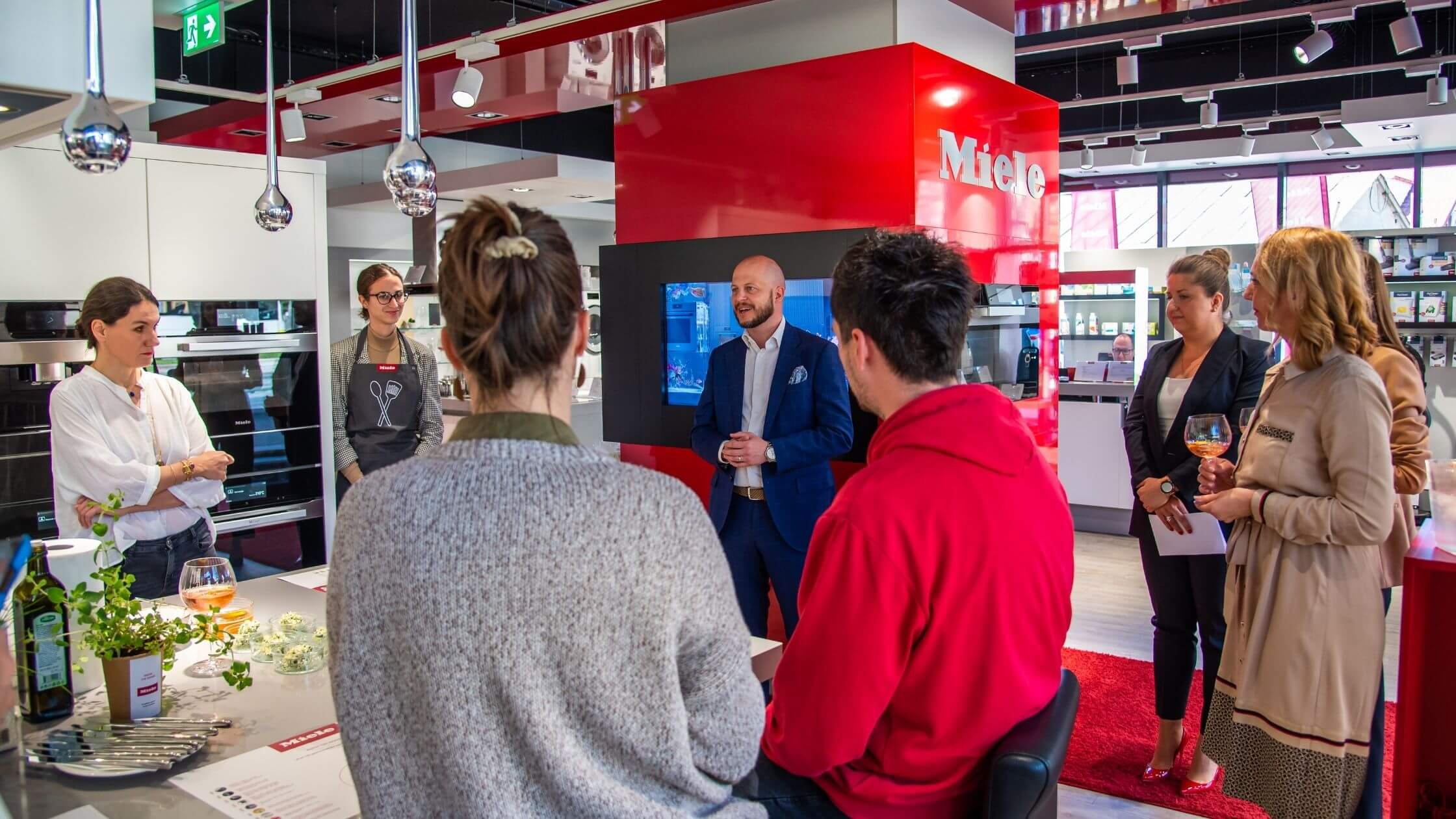
Josef Asbock, Director of Miele Croatia, Slovenia, Bosnia and Hercegovina extending a warm welcome. Image: Credits.
But of course, with all the talk about how ‘smart’, sleek, and innovative these kitchen appliances are, do they produce dishes to impress even the toughest of critics? The answer, in a nutshell, is – most definitely, and in a fraction of the time to boot.
Let’s dive into the delectable courses that chef Damir whipped up, showcasing a diverse series of cooking techniques to put the Generation 7000 to the test. Here’s what was served up during brunch:
- Freshly baked bread rolls with a homemade wild garlic butter
- Wild asparagus risotto, topped with Adriatic shrimp tartare & Pag cheese cream
- Poached Hake with Spring vegetable couscous and Jerusalem artichoke puree
- Roast lamb with potatoes
- Coffee and treats from Split’s acclaimed O’š kolač
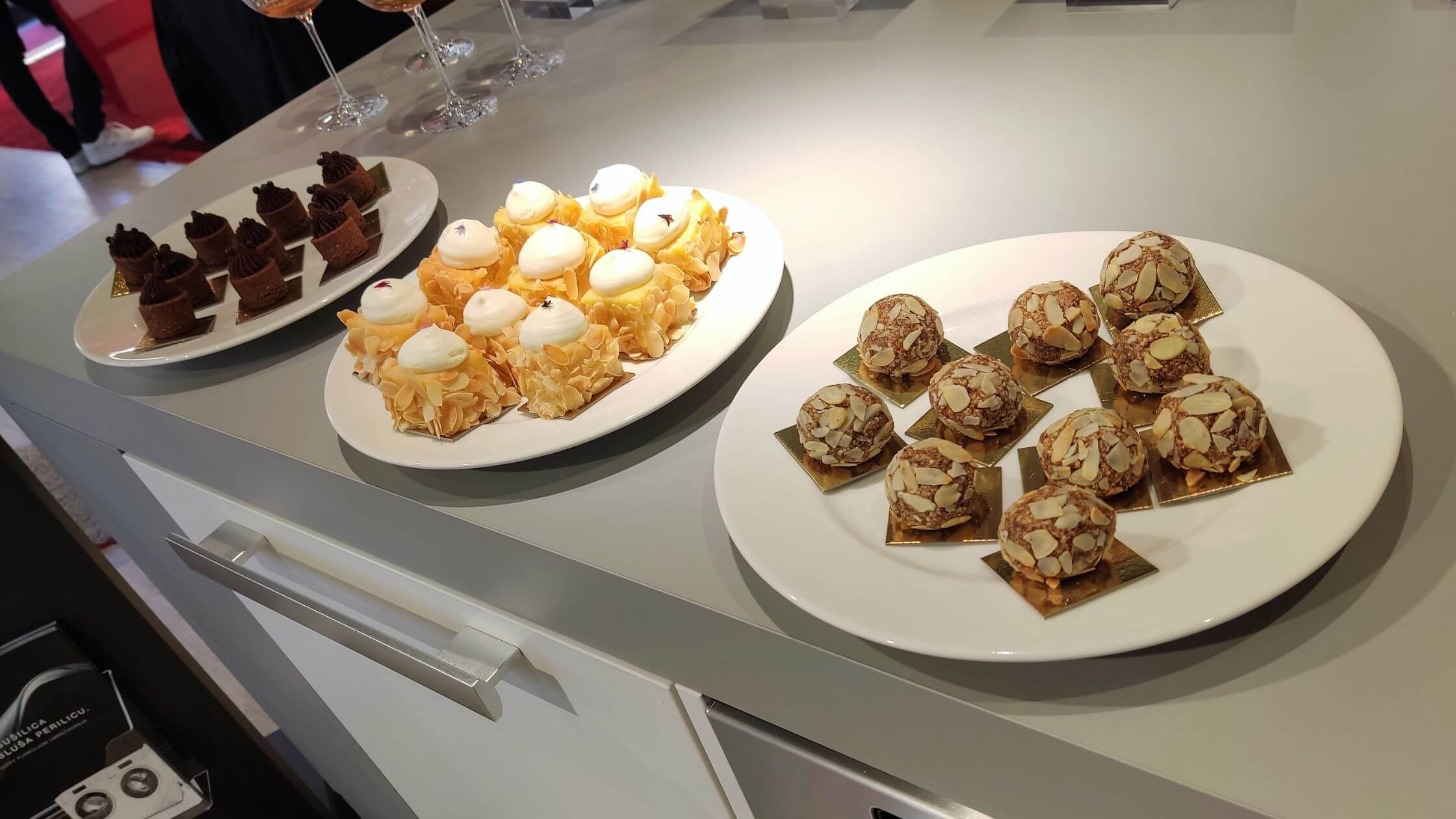
Sweet treats by O’š kolač, owned by renowned pastry chef Tea Mamut. Image: Author’s own.
The main event
Our gastronomic journey began with freshly baked bread rolls, paired with a compound butter infused with wild garlic shoots. Speaking of using local ingredients, the wild garlic comes from the fields of one of Damir’s former students! I couldn’t resist smothering the butter on the still-warm rolls, which went from raw dough to toasty bundles of carb joy in a mere 10-minutes thanks to the Generation 7000 combination steam oven.
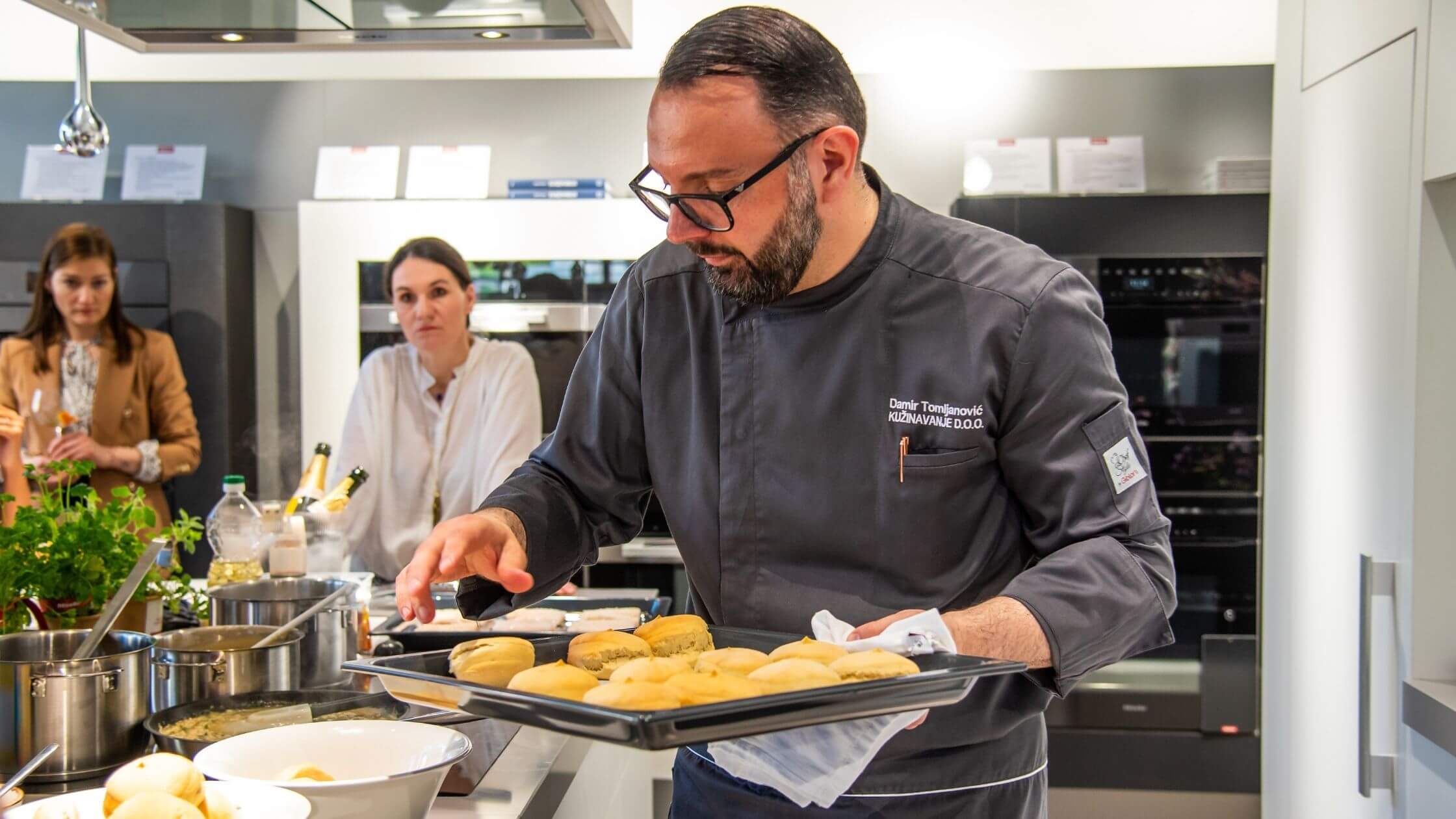
Freshly baked bread rolls, lathered generously with wild garlic butter. Image: Ivan Gracin/Official photographer.
Just as I was about to reach for another one of those fluffy rolls, chef Damir started tossing the in-season wild asparagus risotto. I noticed he had been working on the dish for the past 20 minutes, gradually adding ladle after ladle of stock while stirring, gauging, and tasting, his senses honed through the wealth of experience.
Just before tossing, he added a sturdy amount of cold butter, one square at a time. But rather than continuing to stir the rice as he did earlier, he proceeded to toss the contents of the entire pan as I sat mesmerized by wave after wave of risotto. The process was so masterfully executed that not even a single gain fell from the pan. Magnificent!
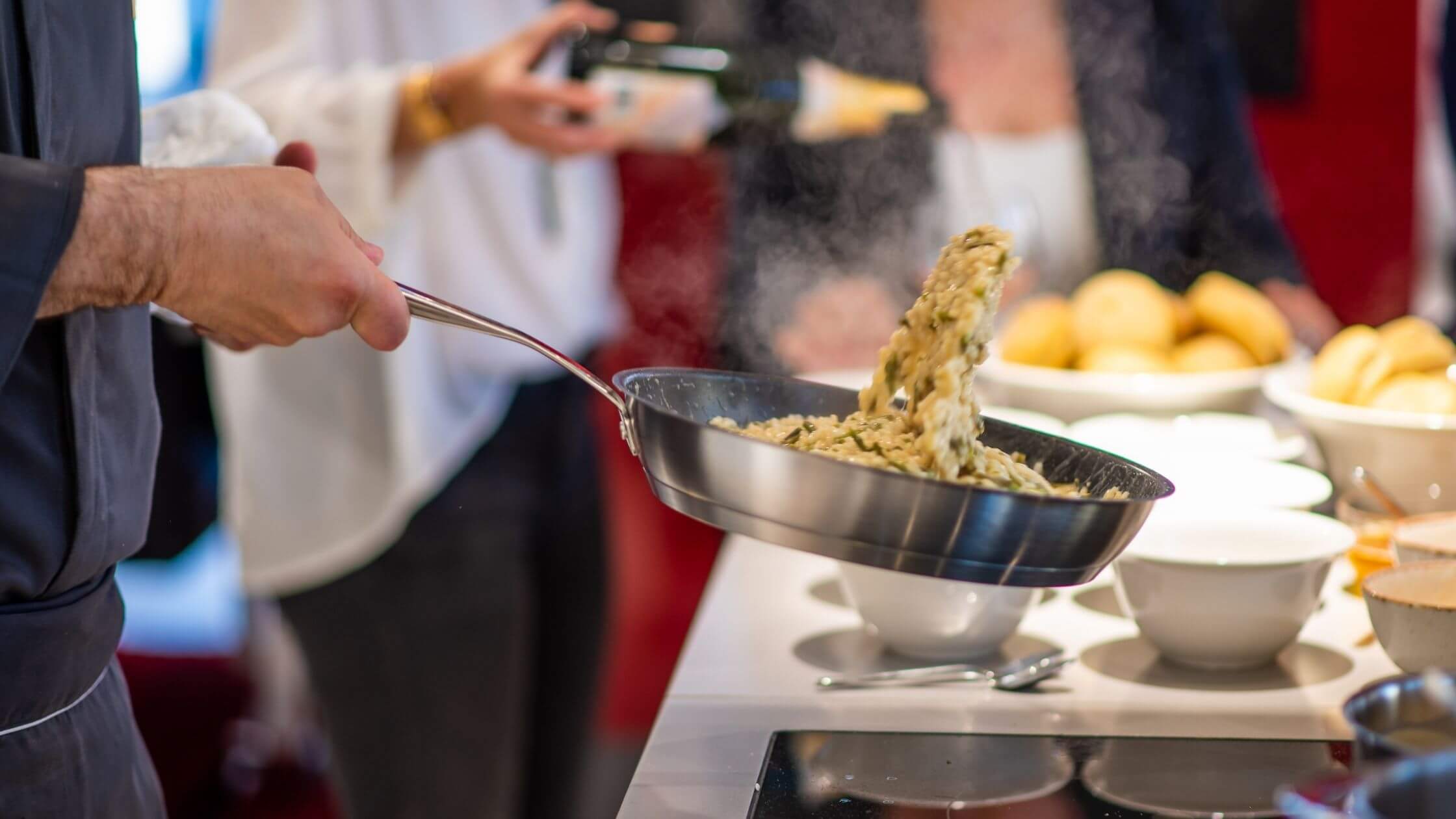
Not a single grain out of place! Image: Ivan Gracin/Official photographer.
This was a classic execution of mantecare, an Italian culinary term essential for making risotto where the butter is mixed (in this case, tossed) vigorously until it develops its desired creaminess.
The wild asparagus risotto was finished off with Adriatic shrimp tartare, Pag cheese cream and crispy onions lighted toasted in chili oil. Chef explained how each ingredient was carefully chosen to add texture and another dimension to an already stellar dish.
As I spooned a mouthful, the smooth, creamy texture gave way to the chew of each individual grain of rice that was perfectly al dente, soaking up just enough of the rich stock to flavor and hold the dish together. Highly impressive for a dish that made no use of cream or cheese to achieve the luscious texture and aroma.
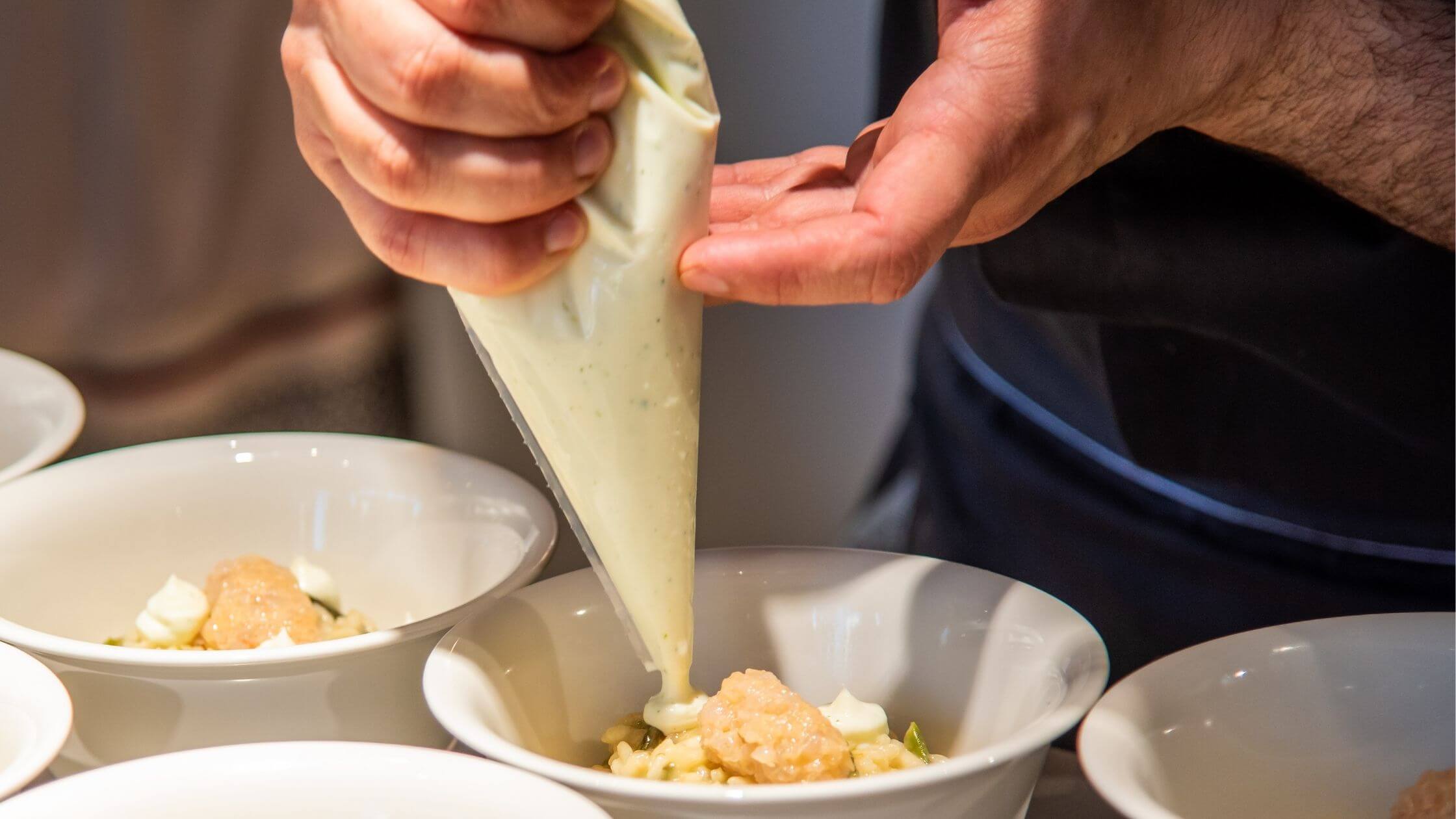
Chef Damir adding the final touches of Pag cheese cream to the wild asparagus risotto. Image: Ivan Gracin/Official photographer.
As chef Damir added, making a great risotto usually requires plenty of time and attention to detail to avoid the pasty, gluey texture that you sometimes get with poorly made risotto. With the Miele induction stove, intelligent temperature sensor technology ensures constant and precise heat output, even allowing Damir to briefly take his eyes off the stove from time to time to detail his method and techniques to cooking the perfect risotto with us.
The next dish to follow the risotto was a lighter, but not any less delicious, fish course. A beautifully plated steamed Hake paired with Spring vegetable couscous, sitting atop a puree of Jerusalem artichoke which was finished off with a light drizzle of browned butter.
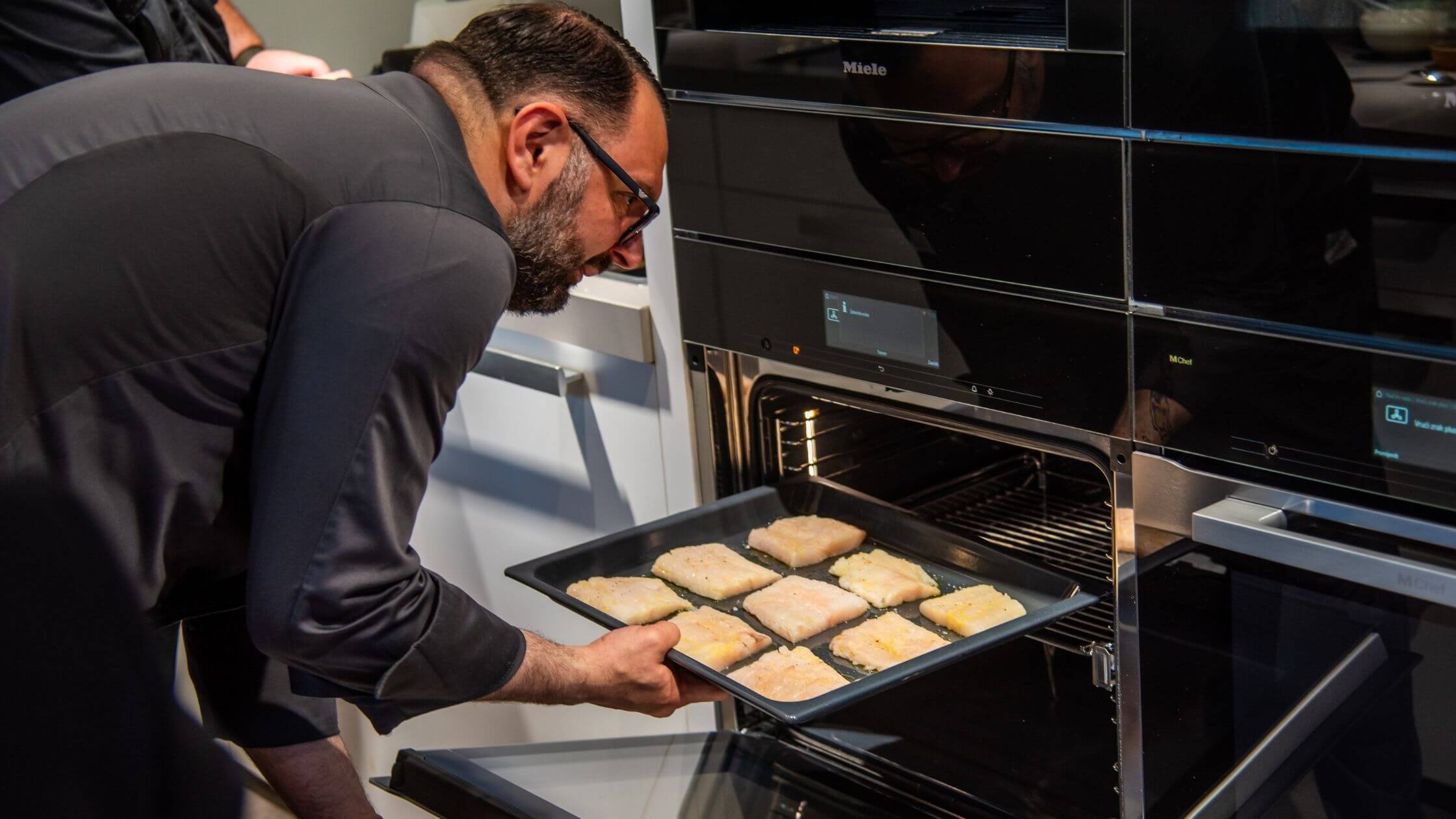
Putting the Hake in Miele’s Dual steam stove. Image: Ivan Gracin/Official photographer.
With the same combination oven as the bread rolls, it took a mere 10 minutes to steam the Hake that was seasoned with just a sprinkling of salt and pepper. This was intentional so as not to mask the freshness of the filet, while simultaneously preserving all its natural flavors and juices.
While plating the fish, chef Damir took the opportunity to expand more on his “back to basics” concept. Reminding us of the importance of good ingredients as the foundation of not just a sophisticated dish, but more essentially, a healthy body and mind. He also described the local agricultural scene in Croatia, and how consumers should strive harder to eat locally and seasonally to respect the natural crop cycles.
On that note, the steamed Hake was served. With just a light prod of my fork, the perfectly steamed fish flaked away into nice, firm chunks. The first bite revealed a mild, slightly sweet fish, elevated by the warm nuttiness of the browned butter. The accompanying couscous was kept simple. Tossed with a medley of vegetables that were expertly brunoised into the smallest uniformed morsels, providing a satisfying crunch.
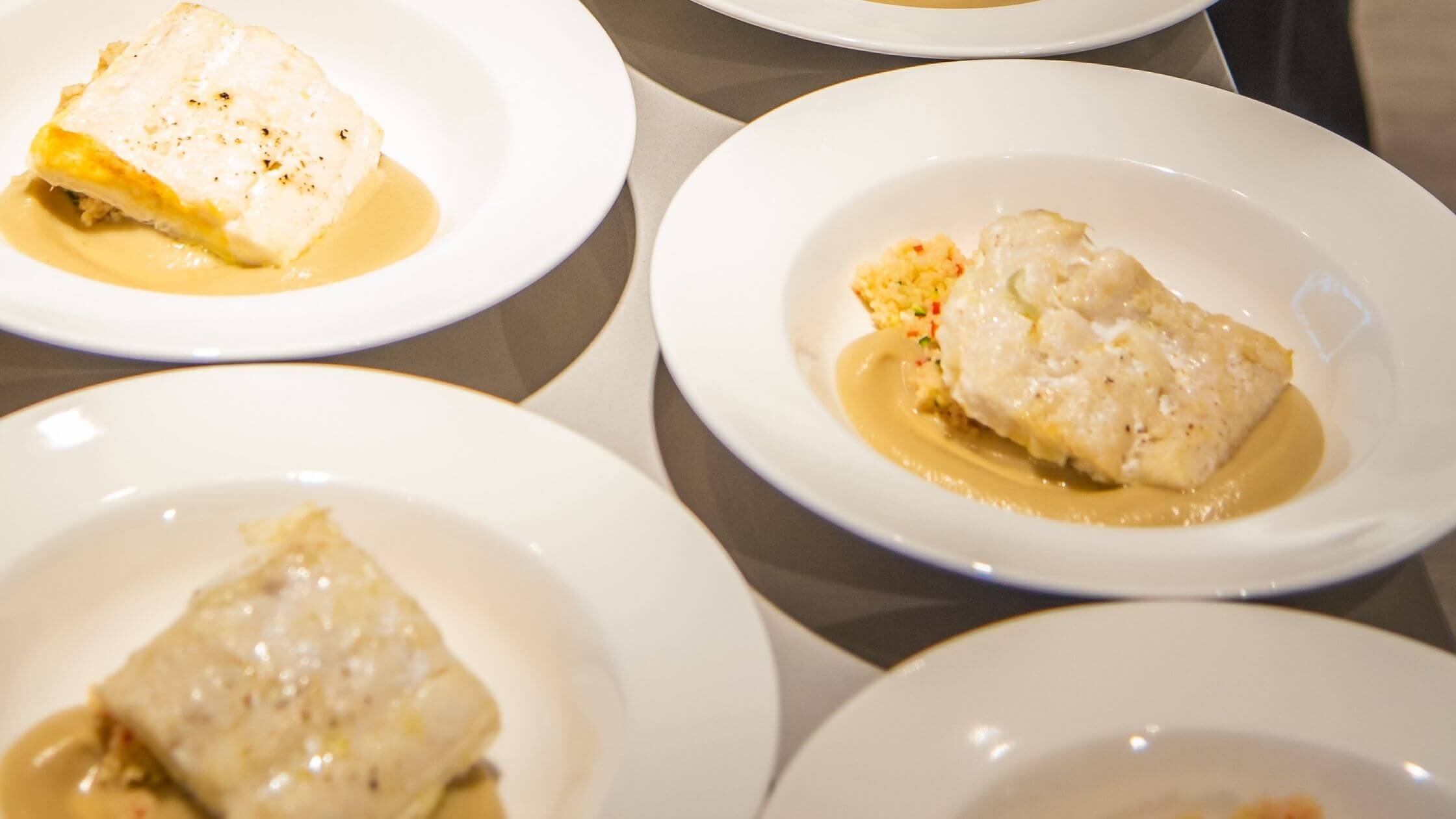
The final plating. Image: Ivan Gracin/Official photographer.
The accompanying Jerusalem artichoke puree was so sweet, delicate, and creamy that I could have easily finished an entire bowl of this in one sitting. The chef later let us in on the fact that nothing was added to season the dish, allowing the artichoke’s natural flavors to take center stage.
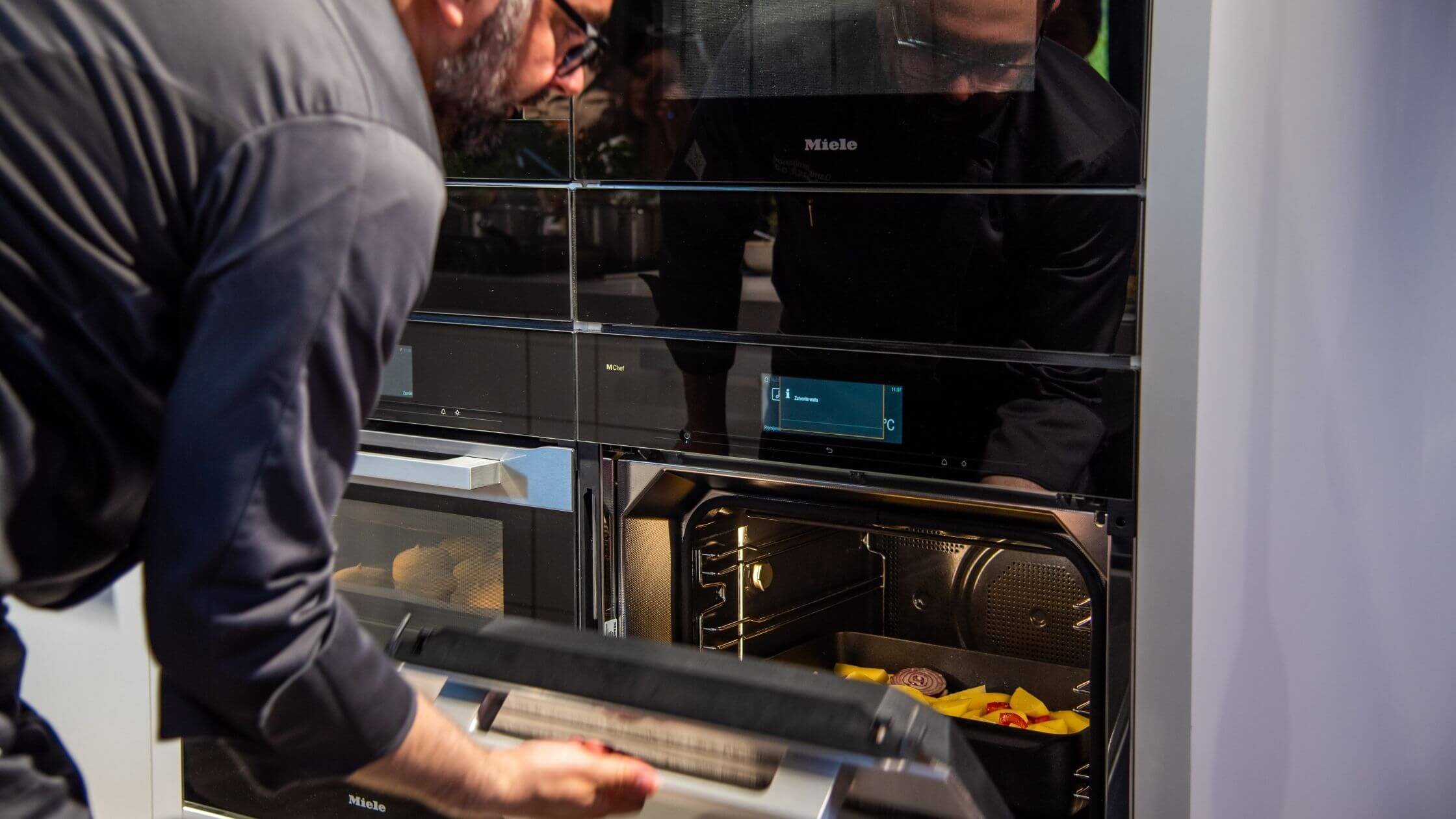
Chef Damir taking the lamb out of the Miele’s Dialog stove. Image: Ivan Gracin/Official photographer.
Just as I thought I couldn’t get any more stuffed, the roast lamb with potatoes was up next. I knew I shouldn’t have had those extra bread rolls, but unfortunately, my love for carbohydrates knows no bounds.
Now, anyone who’s oven-roasted a rack of lamb or even poultry (e.g., chicken or turkey) will fully understand when I say, it’s really, really challenging to ensure the entire roast remains equally tender despite the difference in cooking times between the breast and thigh meat for instance. There have been countless dinner mishaps when the resulting roast comes out dry and tough in one area, but completely undercooked in another.
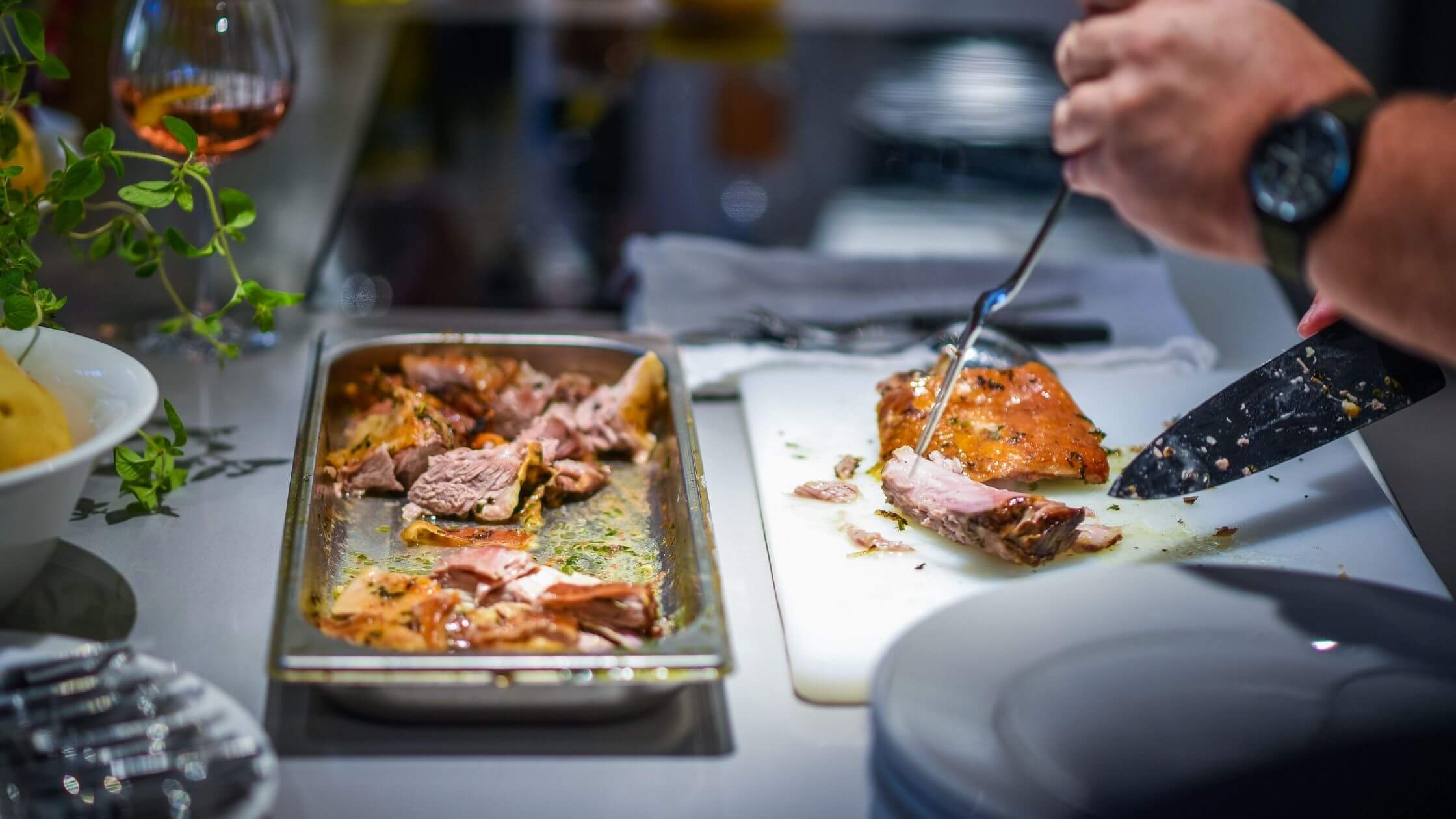
The skin of the lamb managed to crisp up while the meat remained a tender pink on the inside. Perfection. Image: Ivan Gracin/Official photographer.
No surprise that chef Damir managed to impress the crowd yet again. The lamb was perfectly cooked through, with each bite uniformly juicy and tender, regardless of the cut that was plated for us.
As it turns out, the lamb was prepared using Miele’s M Chef technology. Developed in 2017 and using the aid of sensors, M Chef continuously interacts with the food during the cooking process. This process allows the Dialog oven to closely monitor and adjust the temperature to ensure heat is distributed evenly through the meat, cooking it to your desired perfection.
As the event rolled to a close, filled with such amazing food and drink, I felt like I was ready for a nap. What an experience! Not only did I get to savor delicious dishes made by a Masterchef judge and drink champagne before noon, but how advances in culinary technology continue to make the preparation of nourishing, tasty dishes, more accessible to everyone in the comforts of their own home.
As I sipped on my espresso to jolt me from my food coma, I was already trying to suss out when the next Masterclass was taking place, and what other Croatian culinary delights awaited the next group of lucky attendees!
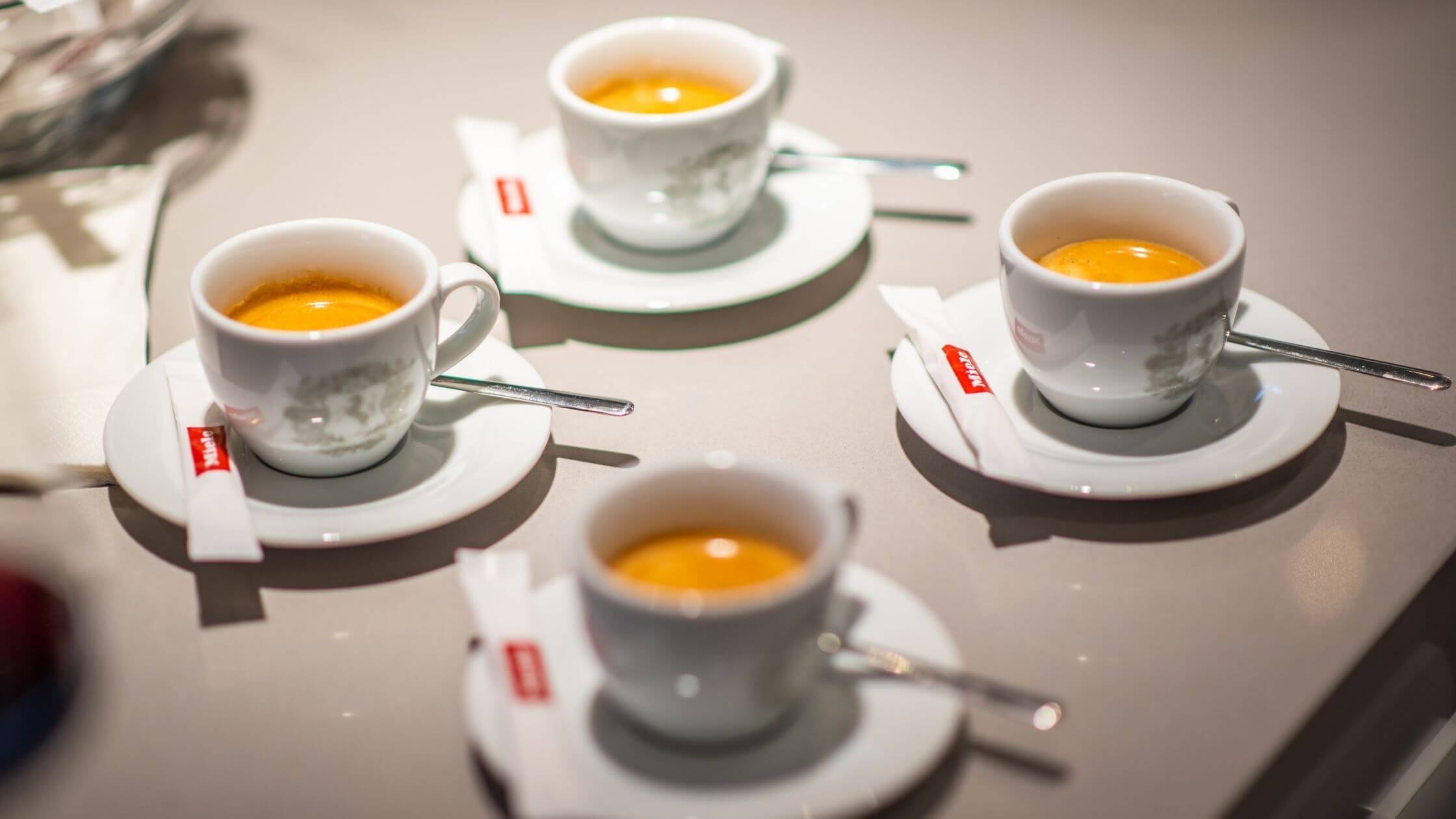
The perfect espresso, made with Miele’s built-in, bean-to-cup coffee machines. Image: Credits.

